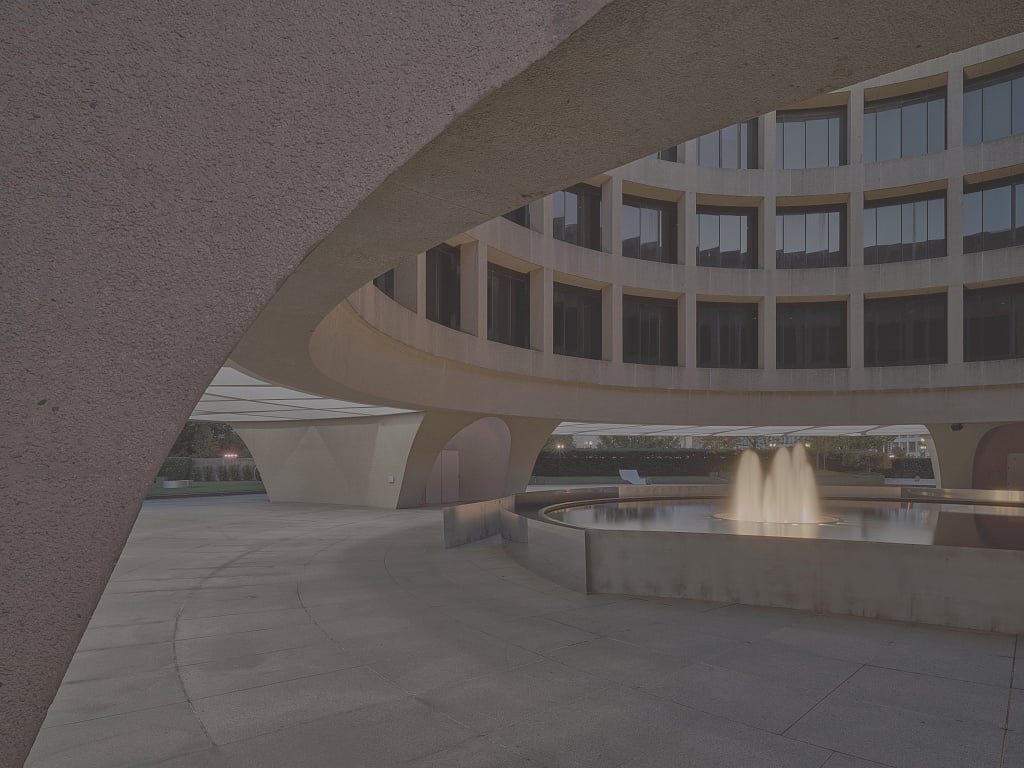A poet might not seem like the obvious choice to reconsider how Americans approach monuments. After all, our great memorials tend to be statues, not sonnets. But as the country continues to grapple with issues around racism and social justice, the New York–based Andrew W. Mellon Foundation—led by acclaimed poet Elizabeth Alexander—has announced it will spend $250 million over five years to help reimagine how the nation celebrates its past.
The idea is to think “very broadly about what monuments are and what form they can take,” says Alexander, who previously chaired the African American Studies department at Yale. What might the Mellon Foundation project mean for Washington, home to the country’s most prominent monuments? We called her to find out.
You grew up in Washington. How did you think about our monuments when you were younger? And how you think about them now?
Growing up in DC, the enormous statues of Presidents indicated their importance. That was before there was something like the Vietnam Veterans Memorial, which I’d like to say more about in a minute. Monuments and memorials have an ambience that is doing all kinds of instruction, even if we aren’t necessarily aware that we’re being taught. I understood monuments as sites that were potentially activated in a way that could give them meaning beyond their initial symbolism.
I don’t pretend to remember it, but my parents took me to the March on Washington when I was in the stroller, and at that moment, the Lincoln Memorial was activated [to make it mean something more than it did]. That activation was also something powerful that happened when Marian Anderson sang on the steps because she was not allowed to sing in the segregated Constitution Hall. So I think there is possibility in monuments. They don’t have to be static.
I’m intrigued by that idea of activation—when memorials take on new meaning. Because when you live near these monuments, you stop seeing them after a while. You don’t even notice them, much less think about the history.
Well, yes. I think of the Confederate monuments that are so dominant in this country—statues of Robert E. Lee in places where he never even set foot, and the fact that Confederate statues were mostly put up decades after the war was won. How many Robert E. Lees do we need?
So where does the Mellon Foundation come in? What are you actually going to do?
This is the biggest initiative in Mellon’s history. We’re trying to think really broadly and interestingly about what monuments are. Some will be [about] erecting not just statues of a person. People will come to us with amazing and visionary ideas of things they want to create.
Then some is the work of recontextualization. Though it’s not work that we supported, an artist named Dustin Klein has been projecting [images of George Floyd and “BLM”] on the statue of Robert E. Lee on Monument Avenue in Richmond. To me, that’s the perfect example of what recontextualization can look like. And then there will be [efforts to change memorials] that we’ll support. One example [of the kind of work we’d like to fund] is in DC at the National Cathedral. They had stained-glass windows of Robert E. Lee, and they decided themselves to take them down because they said the windows are an impediment to worship, which I thought was just so powerful.
The DC government formed a group to make recommendations on monuments, and it issued a report about which ones should be recontextualized or moved, including the Washington Monument. That recommendation ended up in a Trump campaign ad.
You’re right, the stakes are very high, and warped versions of history too often predominate. We’re funding some work with this amazing group from Philadelphia called the Monument Lab, who are going to do a comprehensive audit of [the race and gender of people honored in] monuments. My desire is to make the land speak so that we can tell who we are and not use memorialization and public spaces as a way to put forth certain supremacist agendas.
I just want to say that it’s nice to inter-view a poet. Most people I talk to don’t reel off phrases like “my desire is to make the land speak.”
It comes in handy in the job sometimes.
I’ve recently been wondering if we’re moving toward a post-monument age, but that doesn’t seem to be what you’re talking about at all.
No. Look, we keep thinking about monuments and statues in the first way that comes to mind. But something else we [helped fund] is the Equal Justice Initiative’s National Memorial for Peace and Justice [in Montgomery, Alabama]. That has a lot of different parts to it. There’s the museum that tells us how this country has moved from slavery to mass incarceration. And then there is the memorial to victims of lynching. It’s innovative. There are no [human] figures.
Yeah, that’s a really powerful memorial. Have you looked at how other democracies have rethought their monuments? It’s pretty clear what statues you should pull down when you overthrow a dictator, but is there a good road map for reexamining hundreds of years of history?
I’m learning more. For example, in Germany, the symbol of the swastika is outlawed—there are no memorials to Hitler. I think we do ourselves a disservice if we understand great horror in isolation. So I’m putting out questions I don’t know the answers to. I continue to learn. That’s what I love about my job and this project: that there is so much learning in it for me. What does truth and reconciliation look like? What does it mean to face our history? What does it mean to have a multi-vocal democracy with equity and justice, where we’re listening to more than just the people with conventional power?
South Africa seems like a pretty useful model to look at.
South Africa is always really interesting to think about. Or I have visited the genocide memorial in Rwanda, which is extraordinary. It is one of the hardest places to be telling one of the hardest stories. And what is interesting about that is it was built relatively soon after the genocide.
You wanted to say more about the Vietnam Veterans Memorial.
In a city of so many [statues of] men on horses, to have a war memorial with no figures . . . . It is not only nonrepresentational, but it cuts a slash into the earth that invites you down rather than turning your eye up to feel eclipsed by something. You have [visitors] who are going to remember their own loved ones and people who are going to think about the fact that war is about death. War is about loss. A lot of other war memorials don’t want us to remember that. And so it invites you to a kind of tough and sorrowful contemplation. I think that’s what reckoning is.
















